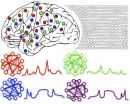Botulinum toxin may offer temporary drooling relief in children with neurological disorders
2010-09-21
(Press-News.org) Botulinum toxin treatment appears to offer a temporary, short-term solution to relieve drooling in children diagnosed with certain neurological disorders, according to a report in the September issue of Archives of Otolaryngology – Head & Neck Surgery, one of the JAMA/Archives journals.
"Recent estimates suggest a prevalence of [drooling in] nearly 60 percent in children in special care school, of which 33 percent could be classified as severe," the authors write as background in the article. "Depending on the associated neurological disorder, cognitive abilities and oral motor function, affected children may experience anything from stigmatization and social neglect to numerous daily clothing changes, perioral dermatitis [skin irritation around the mouth], aspiration pneumonia or even dehydration."
Arthur R. T. Scheffer, M.D., of Radboud University Medical Center, Nijmegen, the Netherlands, and colleagues studied 131 children diagnosed as having cerebral palsy or other non-progressive neurological disorder, and who also had moderate to severe drooling, to test the efficacy of botulinum toxin when used as a treatment for drooling in children with neurological disorders. For the injection of the toxin, children were under general anesthesia and the injections were limited to the submandibular glands, which are responsible for 70 percent of resting saliva production. The sublingual glands and parotid glands were not treated.
Of the 131 children participating in the study, 77 were boys and 54 girls with an average age of 10.9 (age range was 3 to 27 years). About 90 percent of the patients were diagnosed as having cerebral palsy. The researchers developed a drooling quotient to assess the severity of drooling, and this measurement served as the primary measure for both efficacy and duration of botulinum toxin treatment. At the two-month follow-up, the average drooling quotient had decreased from 28.8 (on a scale of zero to 100) at the start of the study (baseline) to 15.5 and 61 patients experienced a 50 percent reduction in the drooling quotient from baseline. At the eight-month follow up, the drooling quotient increased slightly to 18.7, but the authors noted there was still a significant difference compared to baseline assessment.
Additionally, patients benefited from the botulinum toxin injection for an average of 22 weeks and 25 percent of initial responders (11.3 percent of entire population) still showed a clinically significant response to the treatment after 33 weeks, with a handful of patients experiencing continued relief from drooling after one year. "Secondary beneficial effects following injection included improved oral hygiene (reduced perioral dermatitis or reduction in halitosis) in four patients (3.1 percent) and improved speech in another four patients. These effects generally disappeared after eight months."
The authors conclude that their findings "indicate that most patients who initially respond well to injection can expect an effect to last between 19 and 33 weeks. Although the 46.6 percent success rate might appear low, its safety and efficacy make botulinum toxin a useful first-line invasive treatment if conservative measures have failed."
INFORMATION:
(Arch Otolaryngol Head Neck Surg. 2010;136[9]:873-877. Available pre-embargo to the media at www.jamamedia.org.)
Editor's Note: Please see the article for additional information, including other authors, author contributions and affiliations, financial disclosures, funding and support, etc.
ELSE PRESS RELEASES FROM THIS DATE:
2010-09-21
Severe injury to the esophagus can occur after a child swallows a disc battery, according to a report in the September issue of Archives of Otolaryngology–Head & Neck Surgery, one of the JAMA/Archives journals.
"A disc battery is an increasingly common foreign body ingested by children," the authors write as background information in the article. The American Association of Poison Control Centers reported a total of 2,063 disc battery ingestions in 1998; the number increased 80 percent during the next eight years. When the battery is lodged in the esophagus, its alkaline ...
2010-09-21
Patients who seek a second surgery to revise their rhinoplasty often do so because they are dissatisfied with the symmetry of their nasal tip and because they experience nasal obstructions, according to a report in the September/October issue of Archives of Facial Plastic Surgery, one of the JAMA/Archives journals. Surgeons who examine revision rhinoplasty candidates cite slightly different findings than patients, suggesting that communication about nasal aesthetics could be improved.
Approximately 5 percent to 15 percent of patients who have rhinoplasty [plastic surgery ...
2010-09-21
Analysis of seagull droppings has revealed that one in ten carry 'superbug' bacteria, resistant to the last-resort antibiotic Vancomycin. Researchers writing in BioMed central's open access journal Proteome Science investigated 57 migratory seagull samples recovered from an island off the coast of Portugal.
Gilberto Igrejas from the University of Trás-os-Montes and Alto Douro, Portugal, worked with a team of researchers to carry out the study. He said, "We used a novel technique called proteomics to detect the maximum number of bacterial proteins which are thought to ...
2010-09-21
Berkeley — When it comes to conducting complex tasks, it turns out that the brain needs rhythm, according to researchers at the University of California, Berkeley.
Specifically, cortical rhythms, or oscillations, can effectively rally groups of neurons in widely dispersed regions of the brain to engage in coordinated activity, much like a conductor will summon up various sections of an orchestra in a symphony.
Even the simple act of catching a ball necessitates an impressive coordination of multiple groups of neurons to perceive the object, judge its speed and trajectory, ...
2010-09-21
SPRINGFIELD, MO—The American elderberry is showing promise as a profitable commercial fruit crop. Traditionally used for making jelly, juice, and wine, elderberry is becoming increasing important in North America's burgeoning "nutraceutical" industry. Historically, elderberries have mostly been harvested from the wild; researchers have made recently made efforts to select or develop improved cultivars. Increased interest and emerging markets are encouraging scientists to develop improved elderberry cultivars that yield consistent, superior production. Scientists from the ...
2010-09-21
GRIFFIN, GA—Blueberry aficionados will soon have a tasty, colorful new variety for their backyard gardens. Blueberry experts D. Scott NeSmith and Mark K. Ehlenfeldt introduced 'Blue Suede™' in a recent issue of HortScience. The new southern highbush blueberry (Vaccinium hybrid) was released by the University of Georgia's College of Agricultural and Environmental Sciences, the University of Georgia Agricultural Experiment Station, and the U.S. Department of Agriculture–Agricultural Research Service. 'Blue Suede™' is targeted for sales to the home gardener market.
According ...
2010-09-21
WEST LAFAYETTE, Ind. - A Purdue University-led research team has uncovered the chemical components of the adhesive produced by oysters, providing information that could be useful for fisheries, boating and medicine.
A better understanding of oysters' ability to stick together to form complex reefs would help those trying to boost the dwindling oyster population, aid in the creation of materials to keep boat hulls clean without harming the environment, and bring researchers one step closer to creating wet-setting adhesives for use in medicine and construction.
Jonathan ...
2010-09-21
EAST LANSING, MI—When consumers visit garden centers in spring they will most likely buy flowering ornamental plants that are ready for their home gardens. Studies have shown that consumers favor plants that are already in flower rather than those that are "vegetative"—a preference that can present multiple challenges for commercial growers.
To satisfy consumers' wishes, producers of ready-to-flower ornamentals like bedding plants and perennials start growing crops far in advance of the spring buying season, often during the dark and short days of winter. When the days ...
2010-09-21
Dust has been blowing into the Eastern Atlantic Ocean from Africa's Saharan Desert, and a NASA satellite captured some of that dust east of Tropical Storm Julia.
NASA's Moderate Resolution Imaging Spectroradiometer (MODIS) instrument on the Terra satellite captured a visible image of Tropical Storm Julia on Sept. 18 at 13:50 UTC (9:50 a.m. EDT) and noticed a large area of Saharan dust over the Atlantic Ocean, to Julia's east.
On Sept. 20 at 5 a.m. EDT, Julia was still holding on to tropical storm status with maximum sustained winds near 45 mph. Julia was located about ...
2010-09-21
Hurricane Karl made landfall near Veracruz, Mexico on Friday, Sept. 17 and moved inland over Mexico's rugged terrain, which took the punch out of the storm. As Karl was moving into Mexico, NASA aircraft and NASA satellites were gathering data from this storm that jumped from a tropical storm to a Category 3 hurricane the day before.
Karl had maximum sustained winds of 115 mph when it made landfall on Friday afternoon, Sept. 17. That made Karl a Category three hurricane on the Saffir-Simpson scale, and a major hurricane to boot.
On that day, NASA's Genesis and Rapid ...
LAST 30 PRESS RELEASES:
[Press-News.org] Botulinum toxin may offer temporary drooling relief in children with neurological disorders





